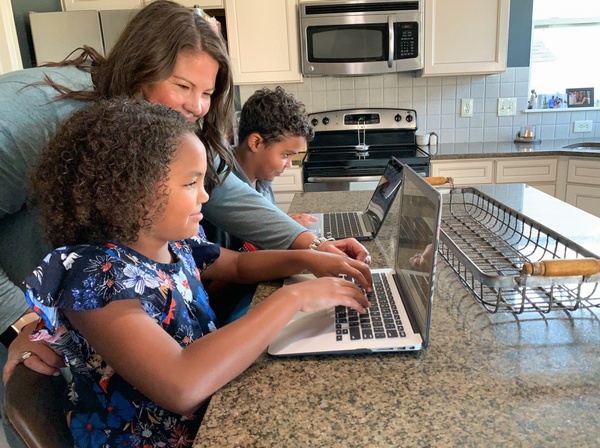While a little anxiety is normal, it may that the usual relief found in positive student relationships may disappear along with bullying if kids are again staying home.
Here are some tips for navigating the adjustment if kids are going back to school.

Image: Nationwide Children's Hospital
For younger children who have a hard time saying goodbye, consider making a special goodbye part of your routine that you can do together, such as a special handshake or a statement that you and your child can make to one another, and remind your child when you might see each other again. Some small children also like a transitional object, like a small item that reminds them of a caregiver while they are separated and that they can "keep safe" while apart.
For older children who have been communicating with teachers primarily through online learning or social media, face-to-face communication might feel uncomfortable at first. And if there is social exclusions or bullying, those will be reduced with home schooling, but worry about grades may result if things don't go as planned. So maintaining a routine is important, especially for families who are continuing to do online learning full-time.
Additional tips for parents and caregivers courtesy of the behavioral health experts at Nationwide Children's include:
*Admit to your child there are a lot of unknowns, but that you are there to support them. Remind them of other adults in their life who are there to help them and that they can always talk to you and them.
*Discuss possible scenarios or fears with children, as well as talking through different options and alternatives. This can help increase children's flexibility, thinking and problem-solving abilities. Asking them what they are nervous about does not increase their anxious thinking so long as the conversation is focused on problem-solving.
*Model appropriate coping skills for children, showing kids how to respond to future unknowns and building resilience. For example, reach out to your own social support about your anxieties and use that as an example with your child of how you sought help and how they can do the same.
*Demystify some of the procedures that may be in place in schools such as mask-wearing and temperature checks by talking about them and practicing them at home. For example, wear masks for short times during the day at home while playing or reading to simulate what it will be like in school. Make sure they are compliant with having their temperature taken using an external thermometer as well.
As always, be more inquisitive if there are drastic changes in behavior, such as sleep changes, mood changes, inability to engage with social environments or friends, or increased anxiety about things that they maybe weren't nervous about in the past.





Comments